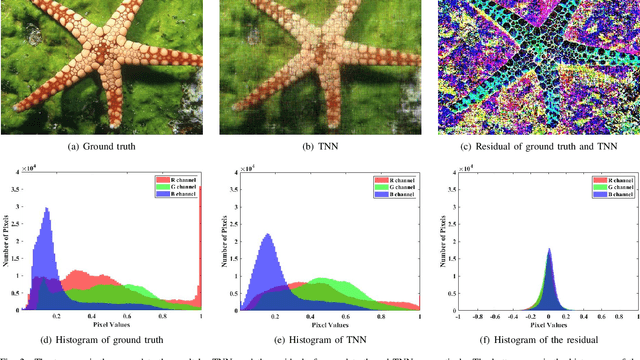Wen-Hao Xu
Deep Plug-and-play Prior for Low-rank Tensor Completion
May 11, 2019



Abstract:Tensor image data sets such as color images and multispectral images are highly correlated and they contain a lot of image details. The main aim of this paper is to propose and develop a regularized tensor completion model for tensor image data completion. In the objective function, we adopt the newly emerged tensor nuclear norm (TNN) to characterize the global structure of such tensor image data sets. Also, we formulate an implicit regularizer to plug in the convolutional neural network (CNN) denoiser, which is convinced to express the image prior learned from a large amount of natural images. The resulting model can be solved efficiently via an alternating directional method of multipliers algorithm. Experimental results (on color images, videos, and multispectral images) are presented to show that both image global structure and details can be recovered very well, and to illustrate that the performance of the proposed method is better than that of testing methods in terms of PSNR and SSIM.
A Fast Algorithm for Cosine Transform Based Tensor Singular Value Decomposition
Feb 08, 2019



Abstract:Recently, there has been a lot of research into tensor singular value decomposition (t-SVD) by using discrete Fourier transform (DFT) matrix. The main aims of this paper are to propose and study tensor singular value decomposition based on the discrete cosine transform (DCT) matrix. The advantages of using DCT are that (i) the complex arithmetic is not involved in the cosine transform based tensor singular value decomposition, so the computational cost required can be saved; (ii) the intrinsic reflexive boundary condition along the tubes in the third dimension of tensors is employed, so its performance would be better than that by using the periodic boundary condition in DFT. We demonstrate that the tensor product between two tensors by using DCT can be equivalent to the multiplication between a block Toeplitz-plus-Hankel matrix and a block vector. Numerical examples of low-rank tensor completion are further given to illustrate that the efficiency by using DCT is two times faster than that by using DFT and also the errors of video and multispectral image completion by using DCT are smaller than those by using DFT.
 Add to Chrome
Add to Chrome Add to Firefox
Add to Firefox Add to Edge
Add to Edge